If you frequently use canned tomatoes in cooking, consider learning how to can tomatoes at home! It’s a great way to save the summertime harvest and help you eat locally year round. Once you understand the “how-to” aspect, check out the recipes for canning tomatoes below!
We’ll start with how to can tomatoes safely, something that beginners should definitely take the time to read. I talk about what exactly that means below, as well as answering some common questions about the canning process. If you’re new to canning, go here to learn more about canning equipment and what you’ll need.
Originally publishes April 2022; this post has been updated.
JUMP TO:
How to Can Tomatoes: A Beginner’s Guide
Fresh, homegrown tomatoes can easily be preserved as a single-ingredient item to be used in cooking some of your favorite recipes. The home canned alternative can replace the canned tomatoes that you pick up at the supermarket for adding to homemade chili or butter chicken.
They can also be preserved as a ready-to-use product, such as salsa, pizza sauce, or chutney. [Scroll down for a collection of recipes.]
5 Easy Steps to Transform Your Pantry!
Ready to switch from store bought to homemade? Let me help you make some changes! Grab my FREE five-part guide to getting started.
No matter how you prefer to preserve them, know that it’s an endeavor that is well worth your time. The fresh flavor of home canned produce outshines the store bought alternatives, plus you’ll know exactly where the tomatoes came from.
What are the Best Tomatoes for Canning?
While any tomato can be preserved using the methods described here, Roma tomatoes are meaty and less watery than slicing tomatoes, making them a great choice for a thick and rich tomato sauce.
The famous Italian San Marzano tomatoes are a Roma variety commonly used for canned tomato products.
What is the Best Way to Preserve Tomatoes?
That is a great big “it depends!” Tomatoes can be preserved using either the water bath method or pressure canning method. Because most tomato canning recipes are acidified, it is completely safe to water bath the jars. Let’s look at the pros and cons of each method.
Water Bath Canning
When it comes to canning tomatoes, water bath canning is often considered the easiest method for preserving them for the pantry.
- The lower temperature with water bath canning assures that the fruit will retain some of its texture.
- Canning pots are inexpensive, and depending on the size jars you’re processing, you may be able to get by with a large pot from your kitchen.
- You don’t have to monitor the boiling jars as closely as you do with pressure canning methods.
Pressure Canning
Pressure canning is perfectly fine, but larger chunks will cook down substantially in the high heat of pressure canners, becoming more like mush. This is fine for items like sauce, but if you’re trying to retain the shape or texture of the fruit, you’d be best to stick with water bath canning.
- Using a pressure canner for canning tomatoes can cut the processing time by more than half.
- Pressure canning uses less water than water bath canning.
- This method does require constant monitoring to assure that the pressure remains at the necessary level.
- Don’t eliminate the acidifier called for in the recipe though.
How Long Do You Process Fresh Tomatoes?
The processing time depends entirely on the individual recipe you are using, the method, and the size of the jars you’re processing.
🍅 Safety First!
Canning is an excellent way to preserve food for the pantry, but there are some important safety considerations to keep in mind. The recipes on this site have been made following safe canning procedures by a certified Master Food Preserver.
- Know the difference between water bath canning and pressure canning. Low acid items must be pressure canned for safety.
- Altering ingredients may change the recipe’s pH, posing a safety issue. I highly recommend investing in pH paper to test your products for acidity level when canning. Note: For safe water bath canning, the Hawaii Master Food Preservers suggest a pH of 4.2 or lower in the tropics. In other regions, the recommended pH is 4.6 or lower.
- Use the proper jars and lids. Never reuse lids, with the exception of the Tattler or Harvest Right hard plastic lids that are intended for such a purpose.
- For more on canning equipment, please go here.
- Want to learn more? The National Center for Home Food Preservation is the go-to resource for safe canning information.
The Handcrafted Pantry

Ready to DIY your pantry with more wholesome ingredients? Check out my ebook, The Handcrafted Pantry! Filled with delicious recipes for some of your favorite condiments, snacks, and toppings, it’s the guide you need to start skipping packaged products and embrace homemade.
Can I Add Vegetables to Canned Tomatoes?
If you are using a safe canning recipe from a trusted source that includes the addition of vegetables, then yes, you can. But adding vegetables that are not specifically called for in a tested recipe is not recommended.
Here’s why:
- Most vegetables are low in acid and are not safe for water bath canning. Adding them to a recipe for canned tomatoes can alter the pH of the recipe. If the acidity is too low, botulism spores can thrive in the sealed jars.
- Adding vegetables may impede heat penetration. When processing jars, the contents need to reach a specific temperature for a specified amount of time, as spelled out in the recipe. Pieces of vegetable mixed in with the tomatoes may not be heated completely through in the recommended amount of time.
Do You Have to Add Lemon Juice When Canning Tomatoes?
This is the million dollar question! Certainly lemon juice is not the only way to acidify your product. Vinegar and citric acid are other acceptable options, though the vinegar may alter the flavor.
A more important question is perhaps WHY would you have to acidify tomatoes? This has to do with reaching the necessary pH for safely processing tomatoes in a water bath canner.
Clostridium botulinum, commonly known as botulism, cannot survive in acidic conditions. Processing acidic foods in a boiling water bath controls the potential growth of mold, yeast, and bacteria.
A wide variety of tomatoes grown in home gardens and available at market means that the pH of the fruit themselves can vary greatly.
Very ripe tomatoes may also have a higher pH, meaning that ripeness plays a factor as well. We can’t assume that all tomatoes are acidic enough to process safely in a water bath without adding additional acid. Recipes that include items like onion or green peppers often require the addition of acid.
When acidifying tomatoes or other canning recipes, it is recommended that you use bottled lemon juice.
Acidifying Tomatoes
When canning whole, crushed, or juiced tomatoes, the recommended addition of acid according to the National Center for Home Food Preservation is:
Per pint
-
- 1 tablespoon of lemon juice (bottled)
- ¼ teaspoon of citric acid
- 2 tablespoons vinegar (5% acidity)
Per quart
-
- 2 tablespoons of lemon juice (bottled)
- ½ teaspoon of citric acid
- 4 tablespoons vinegar (5% acidity)
Do You Have to Cook Tomatoes Before Canning?
No. You can raw pack or hot pack tomatoes. This will depend on your recipe and the processing time for each will vary.
As you’d imagine, raw packing is when you fill canning jars with fresh, raw produce. This recipe for canning crushed tomatoes is a raw pack recipe (and crazy easy!). Start with whole tomatoes, cut into chunks small enough to fit into your jar, and pack into jars.
Hot packing produce means the product is cooked first and transferred to canning jars while still hot. One benefit of hot packing tomatoes is that they are less prone to floating that raw packed.
Do You Have to Peel Them?
It is recommended in the USDA Complete Guide to Home Canning that you do. (The guide is available as a free download at that link.)
Here’s why: Clostridium botulinum spores, commonly known as botulism, live in the soil and are commonly found on the surface of fresh foods. Washing produce removes some of those spores, as does blanching. Peeling removes more.
But here’s the other thing. These spores only grow into dangerous toxins in the absence of air or in low-acid environments. Botulism cannot survive in acidic conditions. Tomato products properly acidified for water bath canning don’t provide the necessary environment for those botulism spores, but low acid tomato recipes that call for pressure canning do. This is why we acidify tomatoes.
Some people feel that tomato skins can impart a slight bitter flavor, but for me itʻs more of a textural issue. (Large pieces of the skin tend to roll up into tight little sticks when cooked.) Here are more details on how to easily peel tomatoes.
I tend to peel them when canning whole tomatoes or large chunks, but if I’m making sauce or salsa I don’t. Instead, I chop the fruit in a food processor and and the smaller pieces of skin are not at all noticeable.
Of course you’ll want to consider the source of your tomatoes. If they’re from your garden and free of toxic pesticides, you’ll likely feel safe using the fruit skin and all. Commercially produced crops that are sprayed with harsh pesticides might make you think twice about eating the skin.
Quick Start Guide
While individual recipes will vary, the basics of canning tomatoes remain the same.
- Choose, inspect, and wash jars. Use the size jar recommended in the recipe. It’s common to use the quart jar size for recipes like pasta sauce and a pint size jar for salsa or chutney. Check the rim of the jar for nicks which can impede sealing.
- Read recipe. Assemble ingredients and necessary equipment.
- Fill canner. Use enough water to cover the jars and start heating. Heat extra water in a kettle or additional pot for topping off the water level.
- Prepare lids. Follow manufacturer’s guidelines. Boiling lids or heating above 180°F can damage the sealing compound.
- Prepare jars. Place empty jars on a towel-lined countertop and fill according to recipe.
- Remove bubbles. Use a bubble tool or plastic knife to dislodge any trapped air.
- Close jars. Wipe jar rims with a damp rag to remove residue. Place lid on jar and screw on a metal band.
- Fill canner. Use a jar lifter to place filled jars into the hot canner, ensuring that jars are covered by 2” of water.
- Process. Return water to a boil and start timer; process for specified time.
- Wait. Turn off heat and wait 5 minutes.
- Remove jars. Use a jar lifter to remove jars from canner and place on a solid surface. Allow to cool undisturbed for at least 12 hours.
15+ Recipes for Canning Tomatoes
Just about any tomato product you purchase at the grocery store can be made safely at home, so long as you use the appropriate canning recipe and safe canning methods.
Take note, beginners! Choose safe recipes and follow best practices exactly. Canning is not the time to experiment!
Properly acidified recipes can be safely canned in a water bath canner. Those that have meat added to the recipe, such as a spaghetti sauce, MUST be processed in a pressure canner.
Canning Salsa
One of my favorite ways to preserve an abundant crop? Salsa! It’s endlessly versatile, and can simply be served with chips as a snack, or used as an ingredient in making soups and chili.
Tomato Chutney
For a deliciously sweet and savory recipe for canning tomatoes, give chutney a try. It’s one of those recipes that is simple to make, but nice enough for company. These are hot pack recipes that requires cooking the chutney before bottling it.
Pizza Sauce
If you’re like my family, homemade pizza is on the menu regularly. I’ve been making my own pizza sauce when tomatoes are available for years. I love having lots in the pantry for whenever we decide pizza is a good idea!
Tomato Jam
A bit like a chunky ketchup, this jam is sweet with the light flavor of tomatoes. Try it in a BLT sandwich!
Taco and Hot Sauce
Add a little flavor to your favorite Mexican meals with this taco sauce recipe. This one works well with meaty Romas.
Spaghetti Sauce
Having a pantry stocked with ready-made spaghetti sauce can help a busy person get dinner on the table in a hurry. Knowing those jars were made from fresh, locally grown tomatoes will make it taste that much sweeter!
Raw-Packed Tomatoes
If you like to use tomatoes in your cooking, this recipe for raw-packing is one of the easiest ways to preserve the fruit. Peel it, cut it into chunks, add salt and acid, then press into jars.
Home Canned Tomato Sauce
You can replace the canned sauce you buy at the store by making your own at home.
DIY Tomato Paste
Making paste requires reducing the volume of paste tomatoes by half and removing the skins and seeds with a food mill or chinois to make a smooth and flavorful concentrate that you can use in cooking. [More on using a food mill here.]
Canning Juice
If you prefer to drink your harvest (bloody Mary, anyone??) homemade tomato juice might be just the thing for your pantry.
Canning Green Tomatoes
While red, ripe fruit is most familiar, using the green fruit left on the vine at the end of the season is a great way to avoid waste. From pickles to relishes, these recipes make the most of the crop!
- Chow chow recipe
- Spiced green tomatoes
- Pickled sweet green tomatoes
- Pickled green tomato relish
- Green tomato pie filling
Originally published in July 2021; this post has been updated.

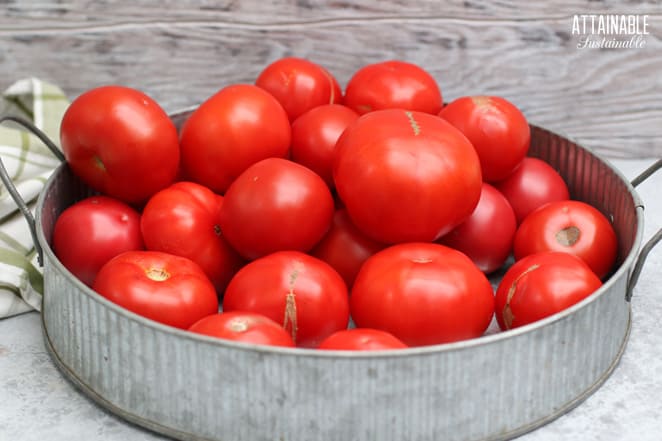
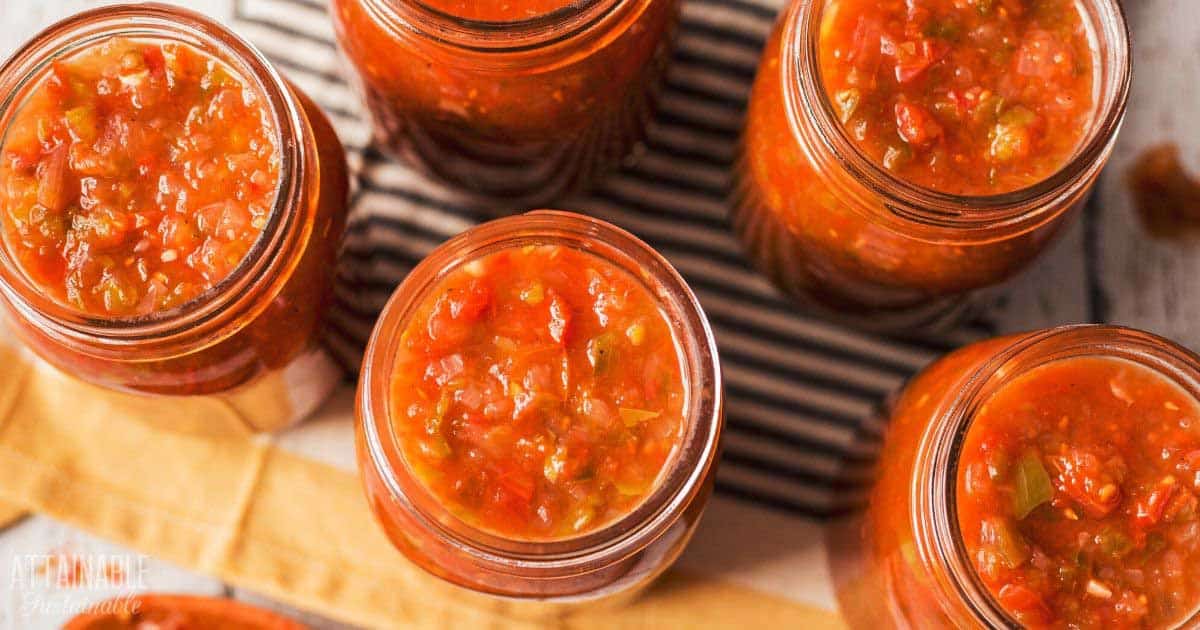
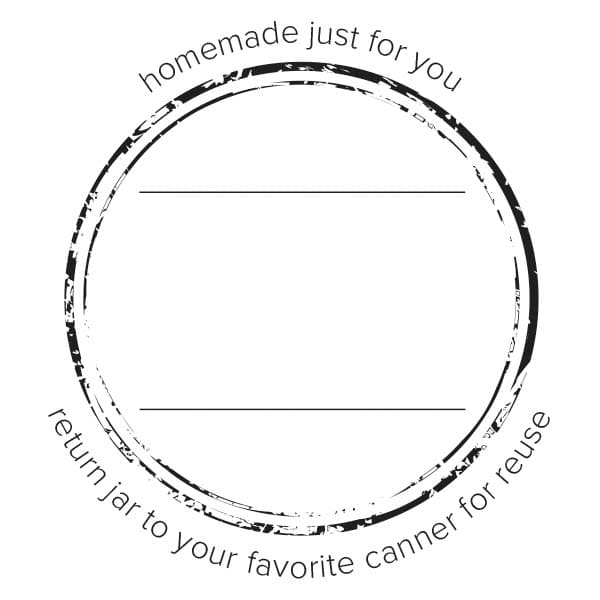
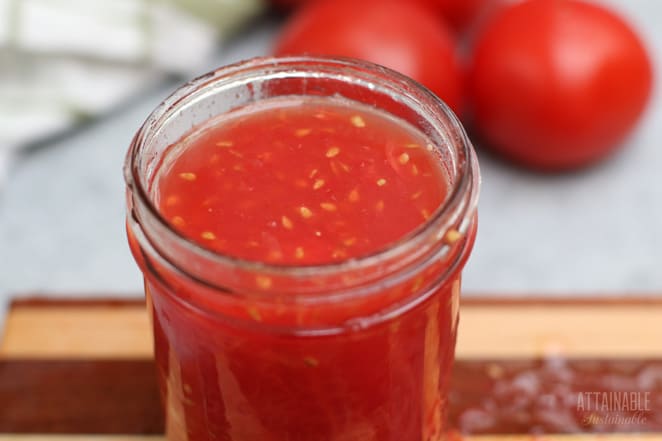
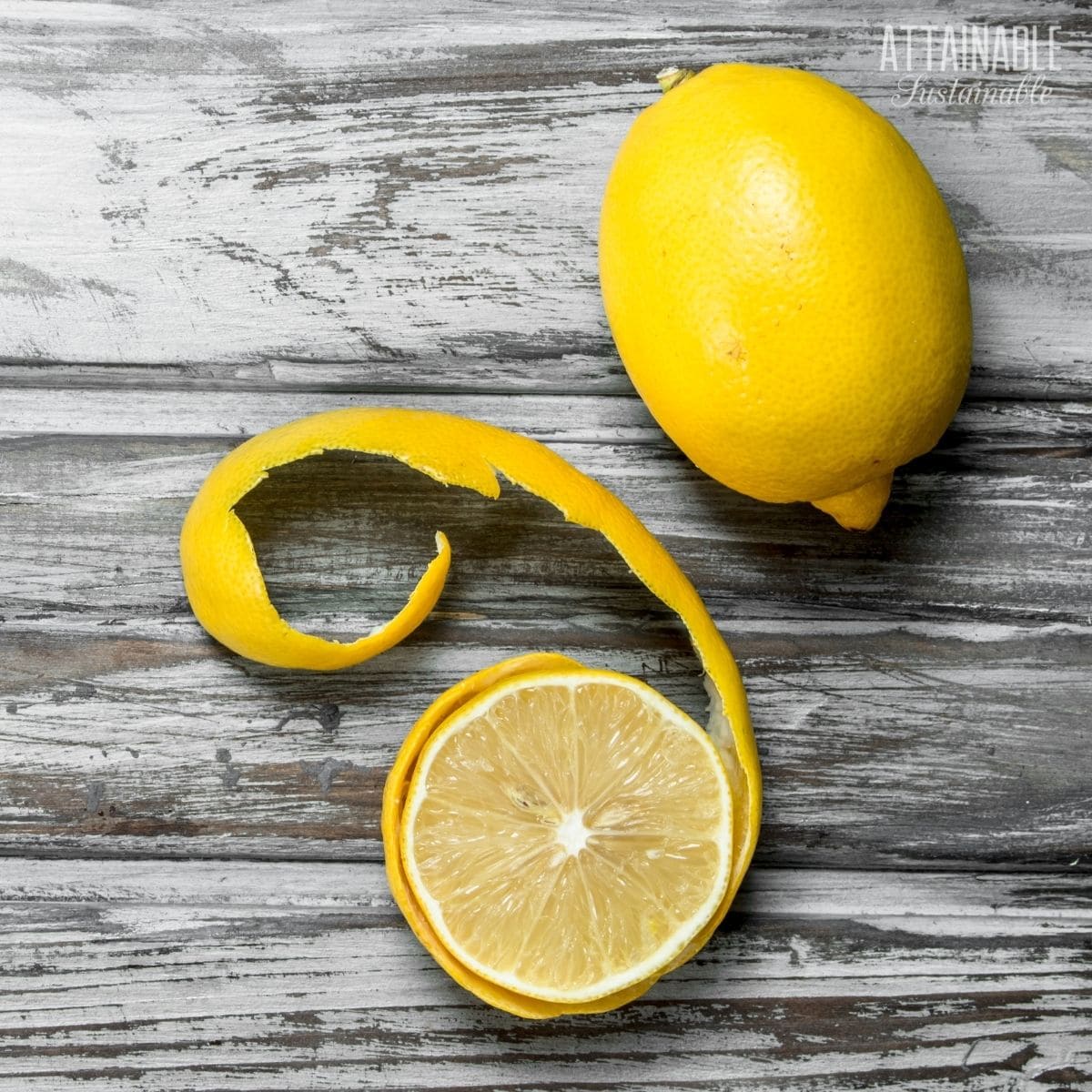
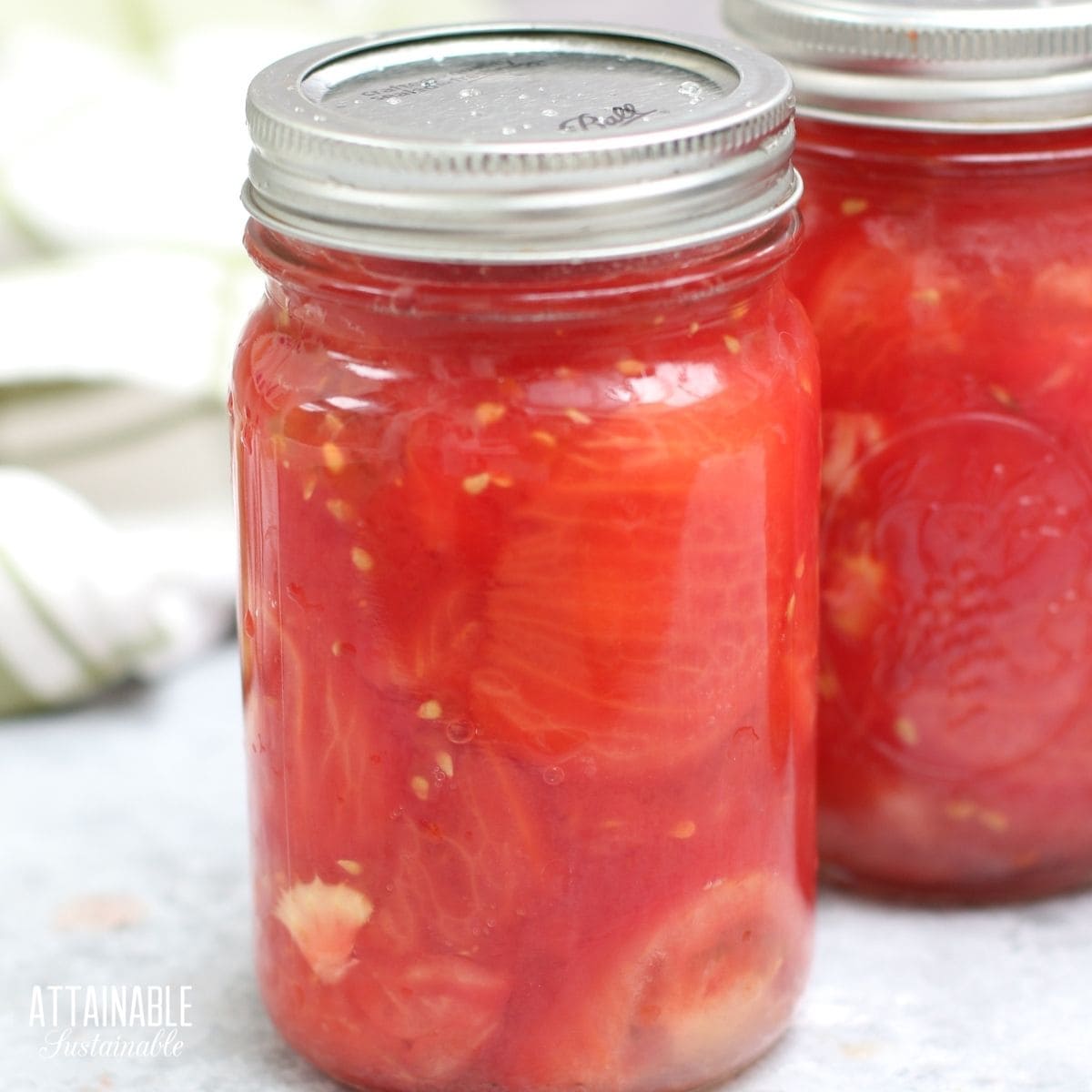
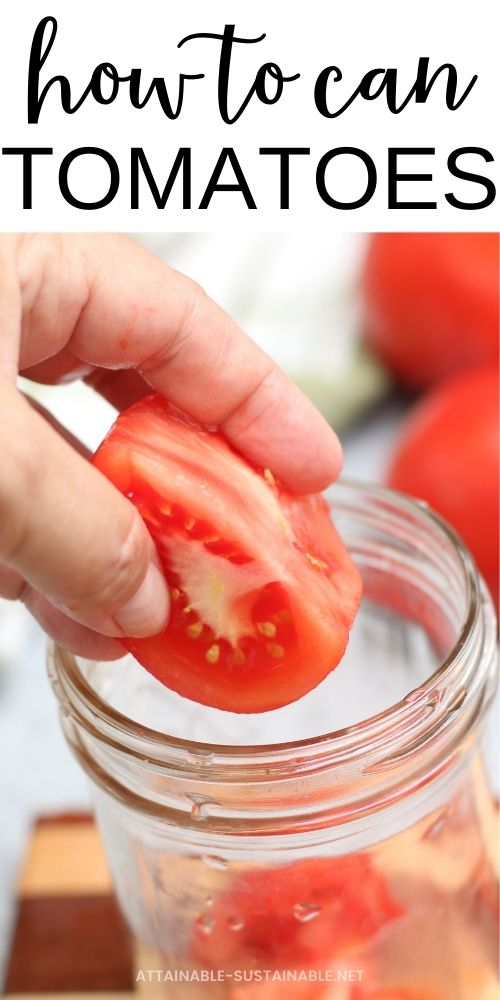
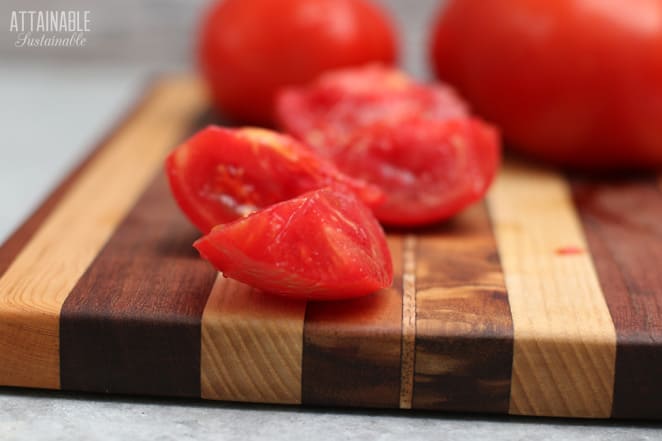
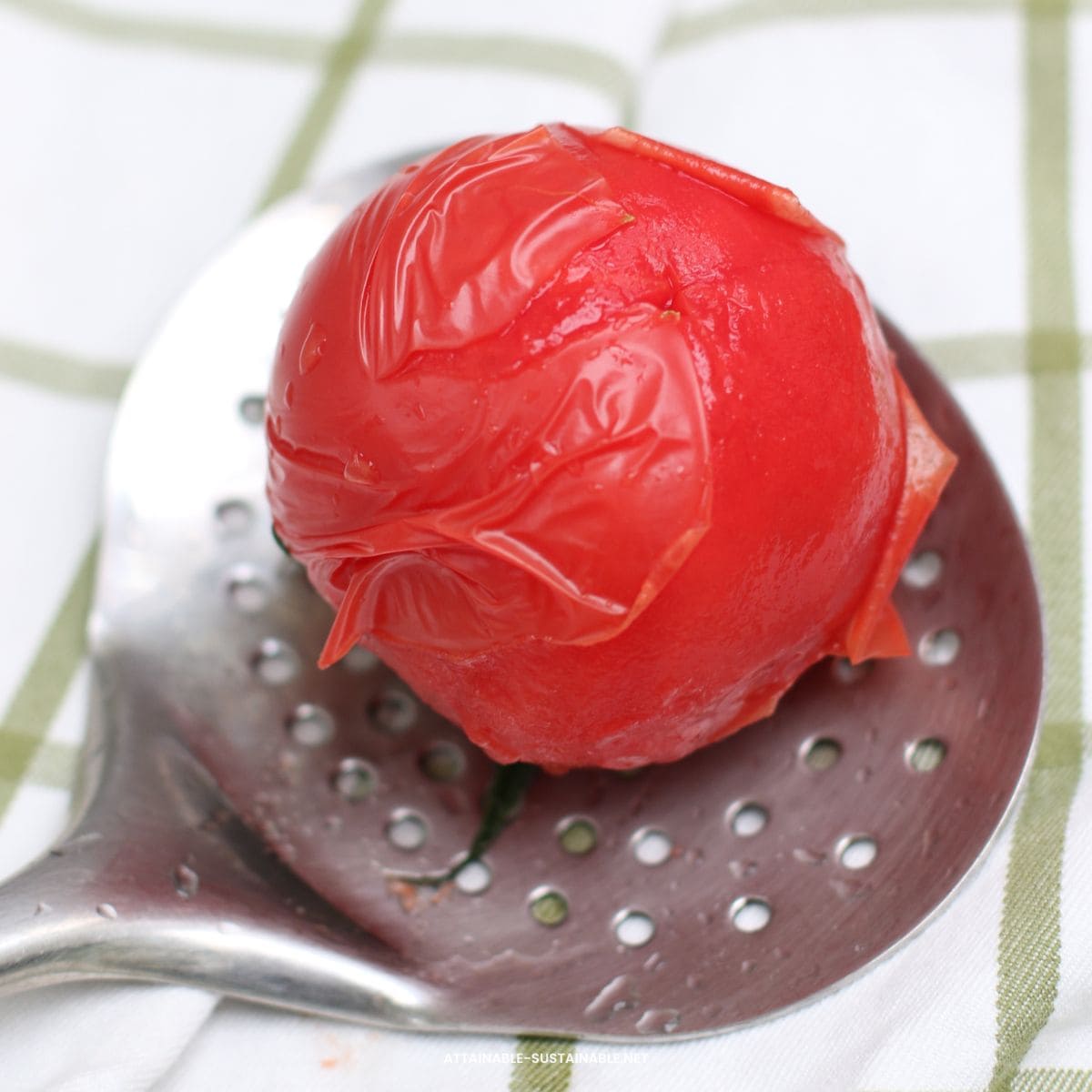
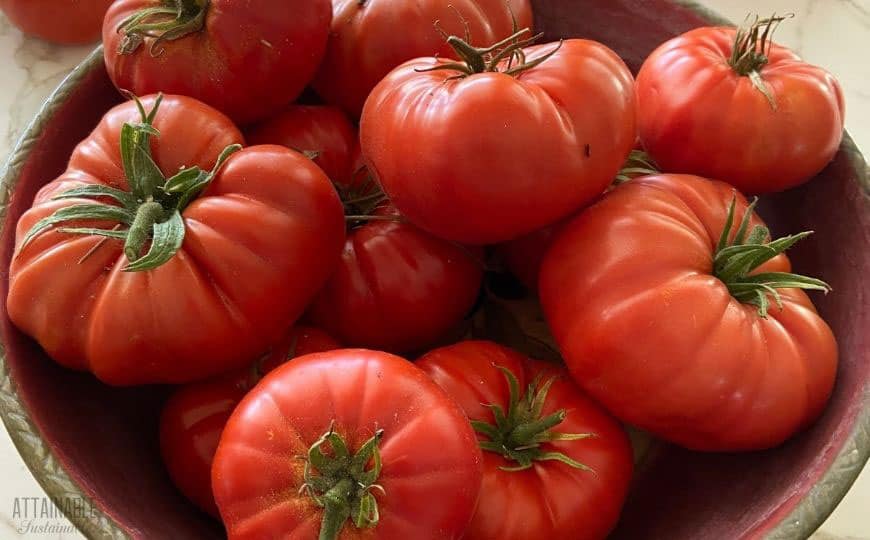
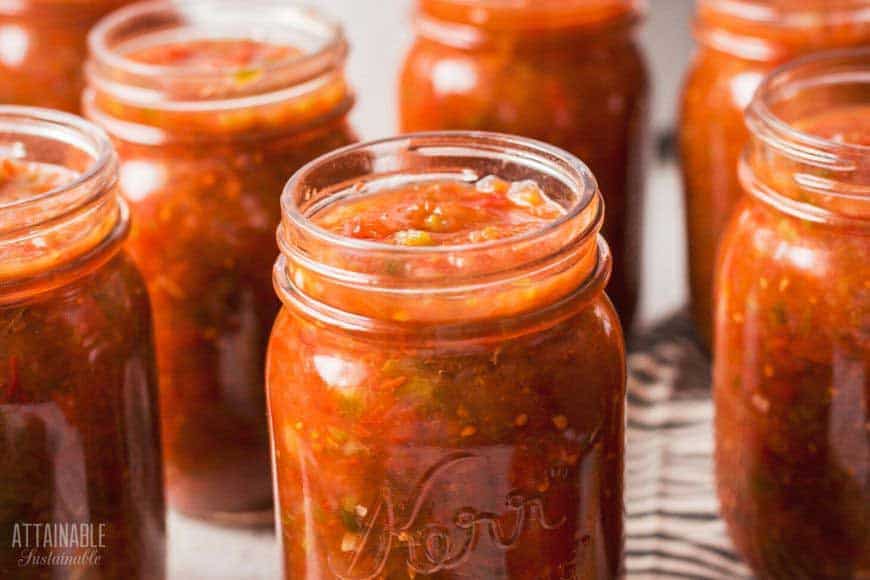
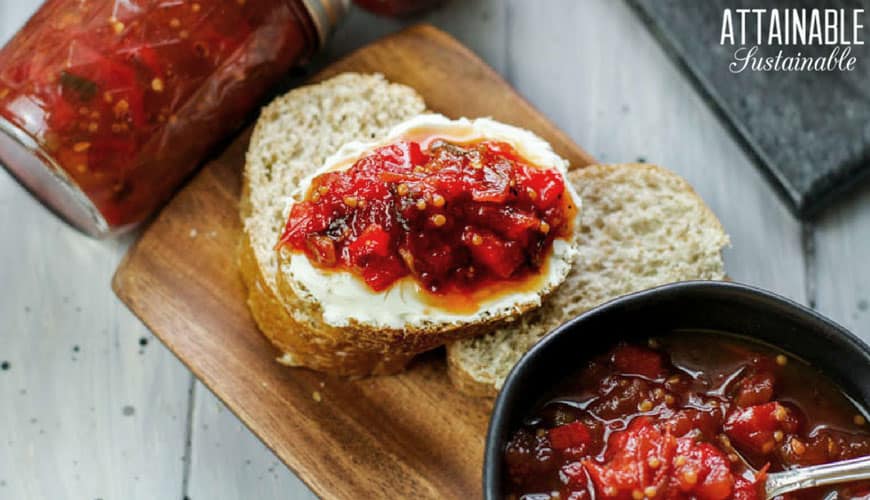
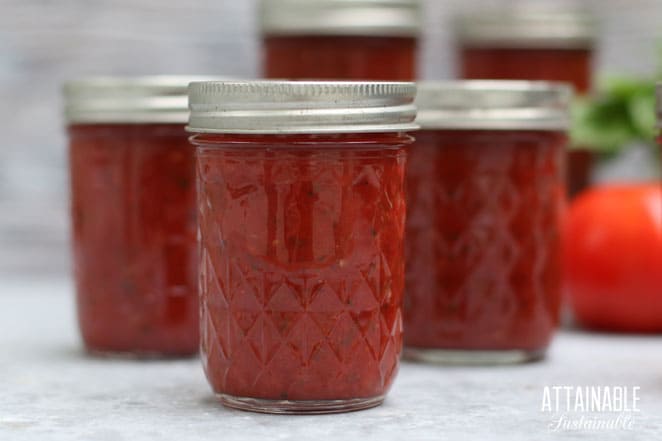
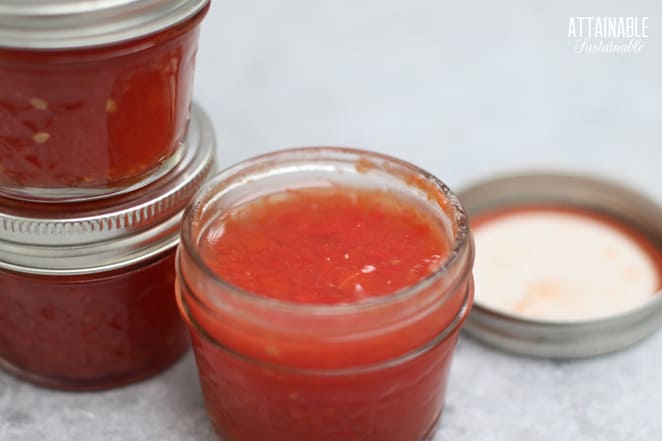
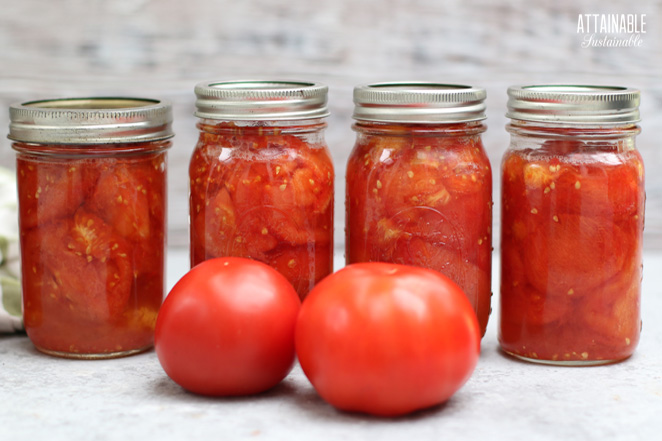
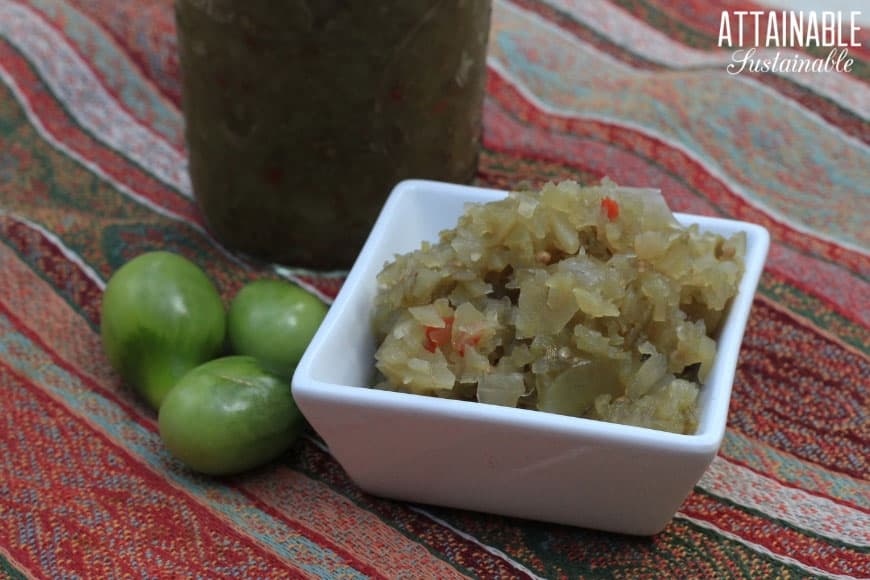
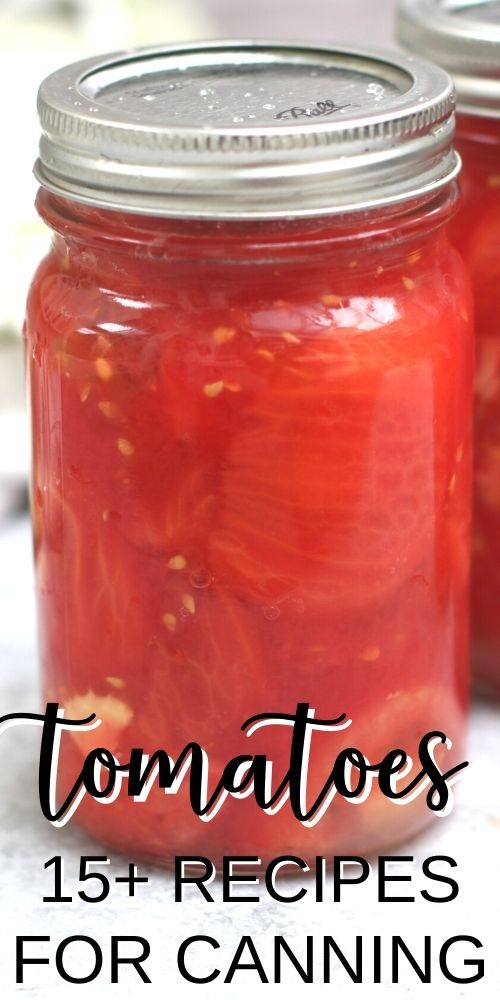





Thanks so much for all of the info! I made some of your salsa from my garden tomatoes and it was a big hit! I started to read up more on your info regarding testing the pH and I was wondering if it’s possible to test the pH AFTER the batch is made? I was thinking I’d like to test my salsa the next time I open a jar. But next time I will definitely follow your advice regarding testing prior to canning!
You can certainly test the jar after you open it, but yes, GOOD IDEA to do it prior to canning.
Great article with very concise directions and information. In the northern Rockies we are still about 2-3 months out for tomato season. Thank you!
Glad you found it useful!